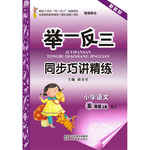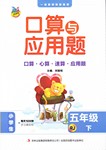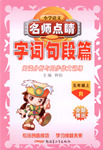题目内容
阅读理解。
Joe Biggs was a butcher (屠夫). His shop was in a village in one of the most beautiful parts of southern
England. He worked in it for many years while his father was there. Then, when his father reached the age
of 65, he stopped working in the shop. Joe was alone in it, so he had to work harder.
Joe worked five and a half days a week. His shop shut at one o'clock on Thursday, and it was shut the
whole of Sunday. Saturdays were the busiest days.
Joe had a big fridge in his shop, but he tried not to buy too much meat at a time.
One Thursday a woman came into the shop at five minutes to one. "I'm sorry I'm very late," she said,
"but some people have just telephoned to say that they are going to come to dinner tonight, and I need some
more meat."
Joe only had one piece of good meat in the shop. He had sold all the rest earlier in the day. He took the
piece out and said to the woman. "This is £7 15." "That piece is too small," the woman answered. "Haven't
you got anything bigger?"
Joe went into the room behind his shop, opened the fridge, put the piece of meat into it, took it out again
and shut the door of the fridge with a lot of noise. Then he brought the piece of meat back to the woman and
said, "This piece is bigger and more expensive. It's £9. 30."
" Good," the woman answered with a smile, "give me both of them, please."
England. He worked in it for many years while his father was there. Then, when his father reached the age
of 65, he stopped working in the shop. Joe was alone in it, so he had to work harder.
Joe worked five and a half days a week. His shop shut at one o'clock on Thursday, and it was shut the
whole of Sunday. Saturdays were the busiest days.
Joe had a big fridge in his shop, but he tried not to buy too much meat at a time.
One Thursday a woman came into the shop at five minutes to one. "I'm sorry I'm very late," she said,
"but some people have just telephoned to say that they are going to come to dinner tonight, and I need some
more meat."
Joe only had one piece of good meat in the shop. He had sold all the rest earlier in the day. He took the
piece out and said to the woman. "This is £7 15." "That piece is too small," the woman answered. "Haven't
you got anything bigger?"
Joe went into the room behind his shop, opened the fridge, put the piece of meat into it, took it out again
and shut the door of the fridge with a lot of noise. Then he brought the piece of meat back to the woman and
said, "This piece is bigger and more expensive. It's £9. 30."
" Good," the woman answered with a smile, "give me both of them, please."
1. Joe worked alone in the shop _____.
A. on Saturdays
B. on Thursdays
C. after his father died
D. after his father stopped working
B. on Thursdays
C. after his father died
D. after his father stopped working
2. Joe sold meat in his shop _____.
A. on Thursday afternoons
B. on Sundays
C. on Fridays
D. every day
B. on Sundays
C. on Fridays
D. every day
3. One day a woman came to his shop _____.
A. at 1:55, Tuesday
B. at 1:05
C. to say sorry to him
D. because someone had suddenly telephoned her
B. at 1:05
C. to say sorry to him
D. because someone had suddenly telephoned her
4. Joe only had one piece of good meat because _____.
A. Joe's fridge was too small.
B. he tried not to buy too much meat at a time
C. he knew that the meat would go bad (变质)
D. he had no money to buy more
B. he tried not to buy too much meat at a time
C. he knew that the meat would go bad (变质)
D. he had no money to buy more
5. Which of the following is TRUE?
A. The woman wanted to buy the two pieces of meat together.
B. The woman didn't want the expensive piece of meat.
C. Joe brought the woman a different piece.
D. People bought all the meat from him.
B. The woman didn't want the expensive piece of meat.
C. Joe brought the woman a different piece.
D. People bought all the meat from him.
1-5 DCDBA

练习册系列答案
 举一反三同步巧讲精练系列答案
举一反三同步巧讲精练系列答案 口算与应用题卡系列答案
口算与应用题卡系列答案 名师点睛字词句段篇系列答案
名师点睛字词句段篇系列答案
相关题目
| 阅读理解。 | ||||||||
| ||||||||
| 1. If you are interested in folk music, yon might choose the book _______. | ||||||||
| A. The Snowman B. Madame Bovary C. Electric Eden D. Between Shades of Gray | ||||||||
| 2. The Snowman most probably tells _______. | ||||||||
| A. a life story B. a disaster story C. a love story D. a detective story | ||||||||
| 3. We can infer (推荐) that all the books above are _______. | ||||||||
| A. available B. for adults C. expensive D. newly written |



